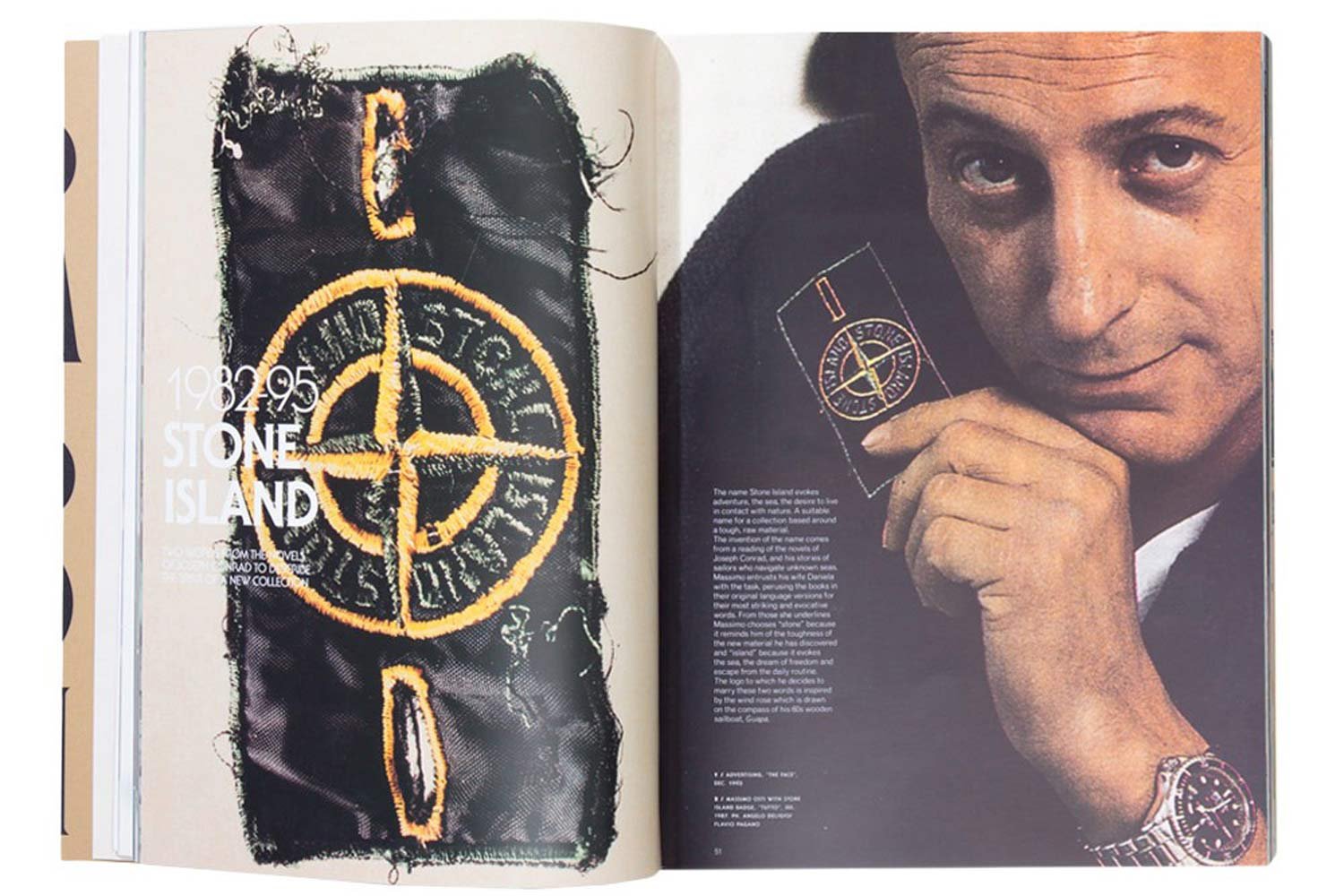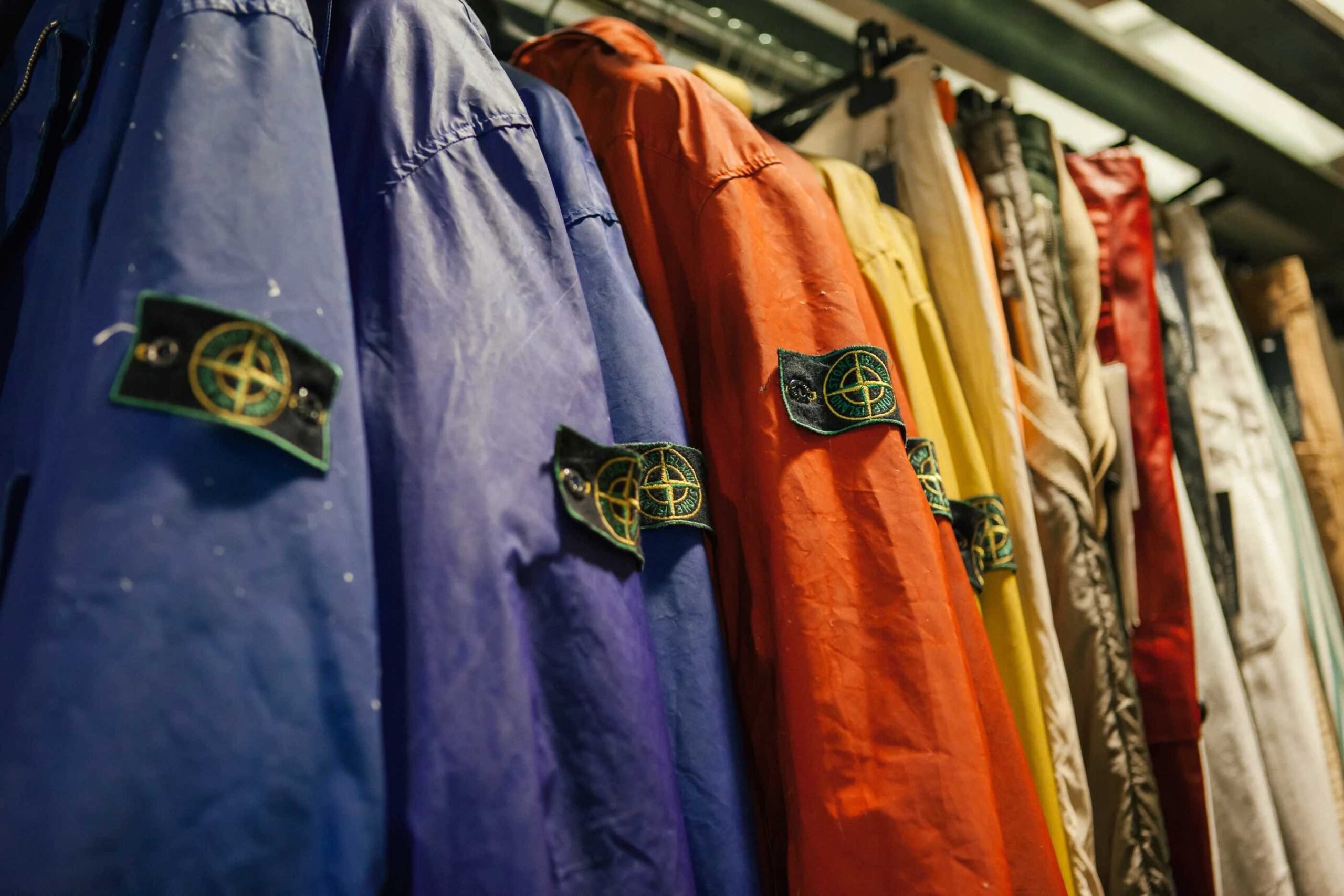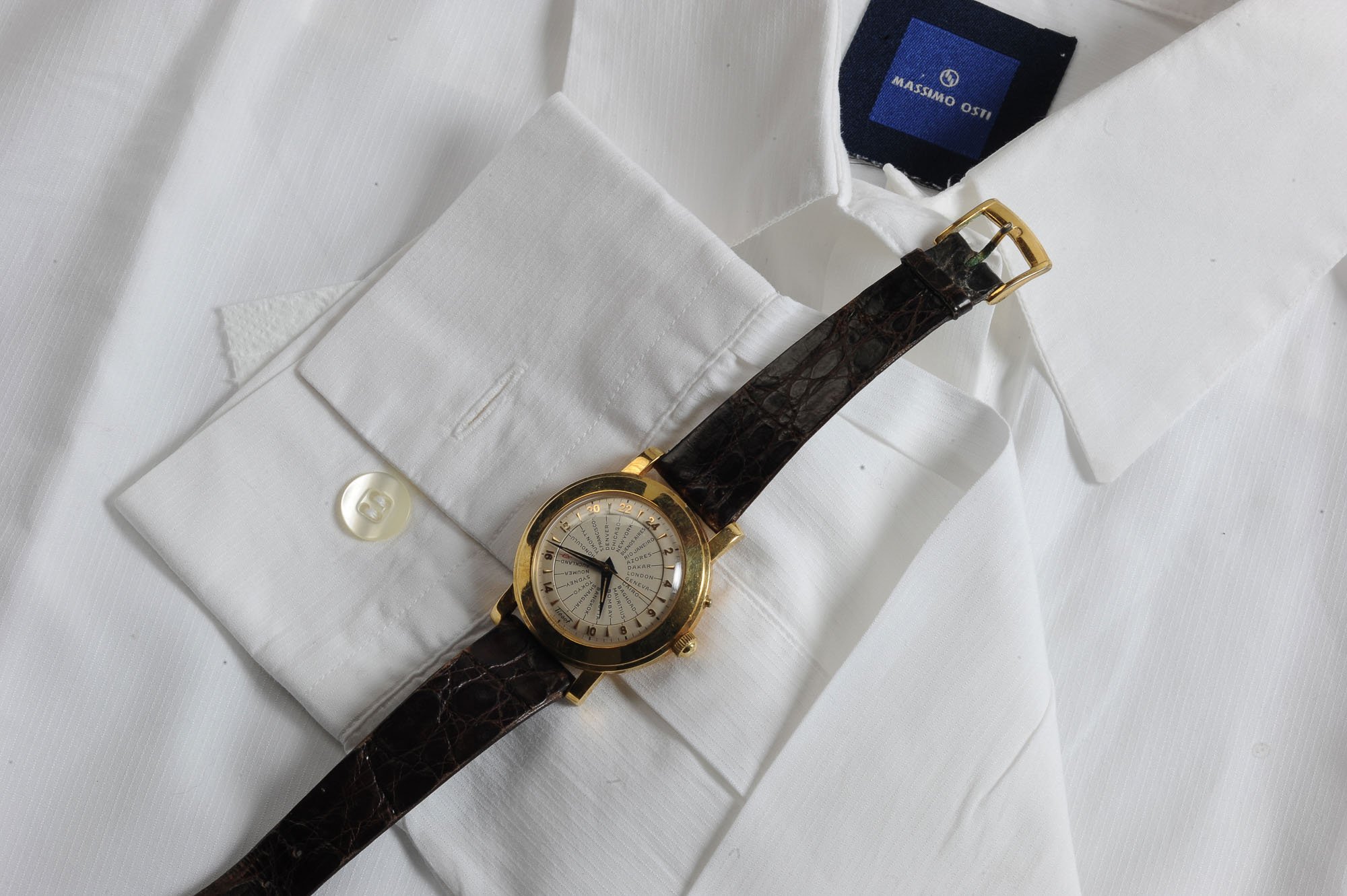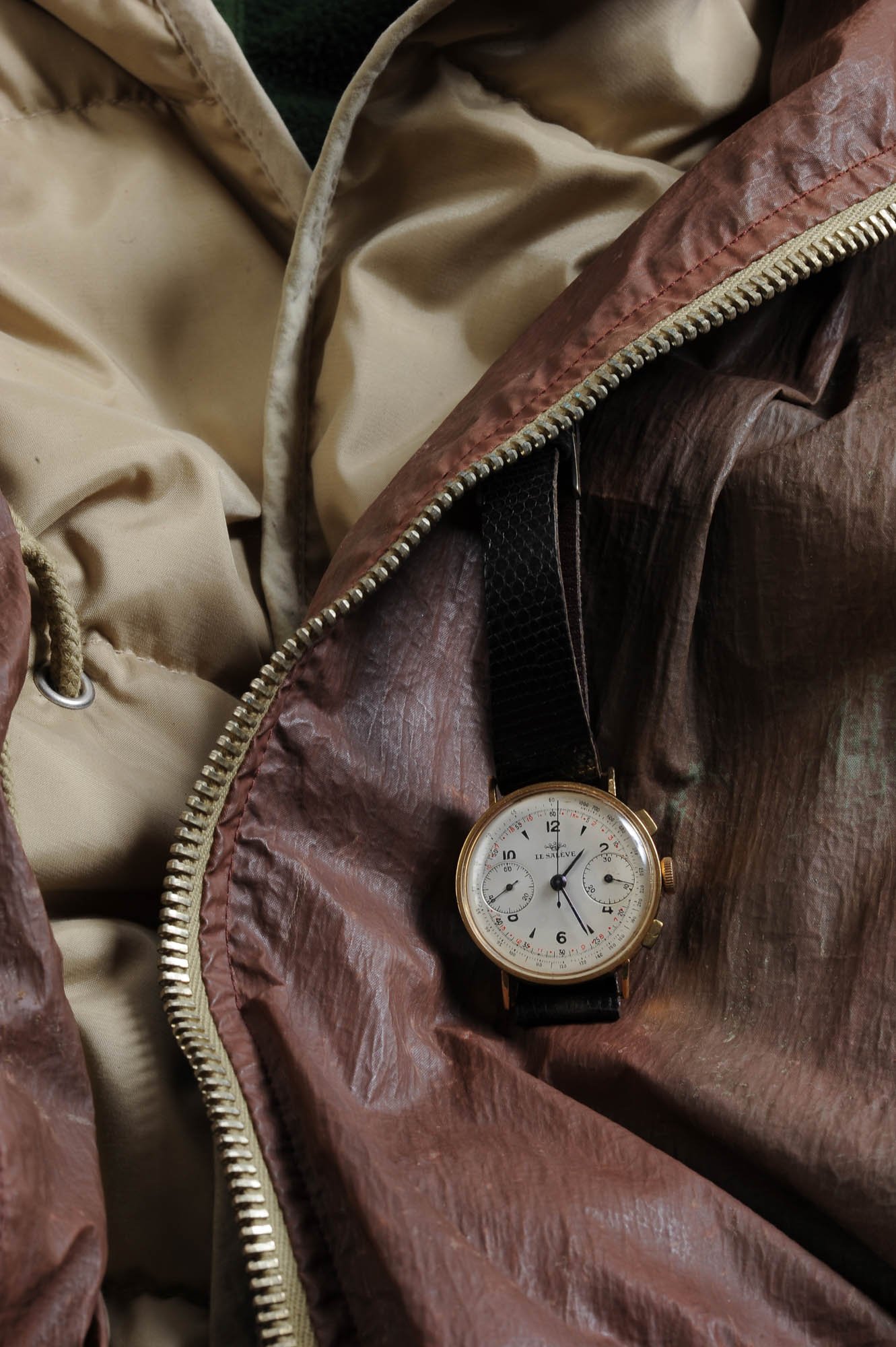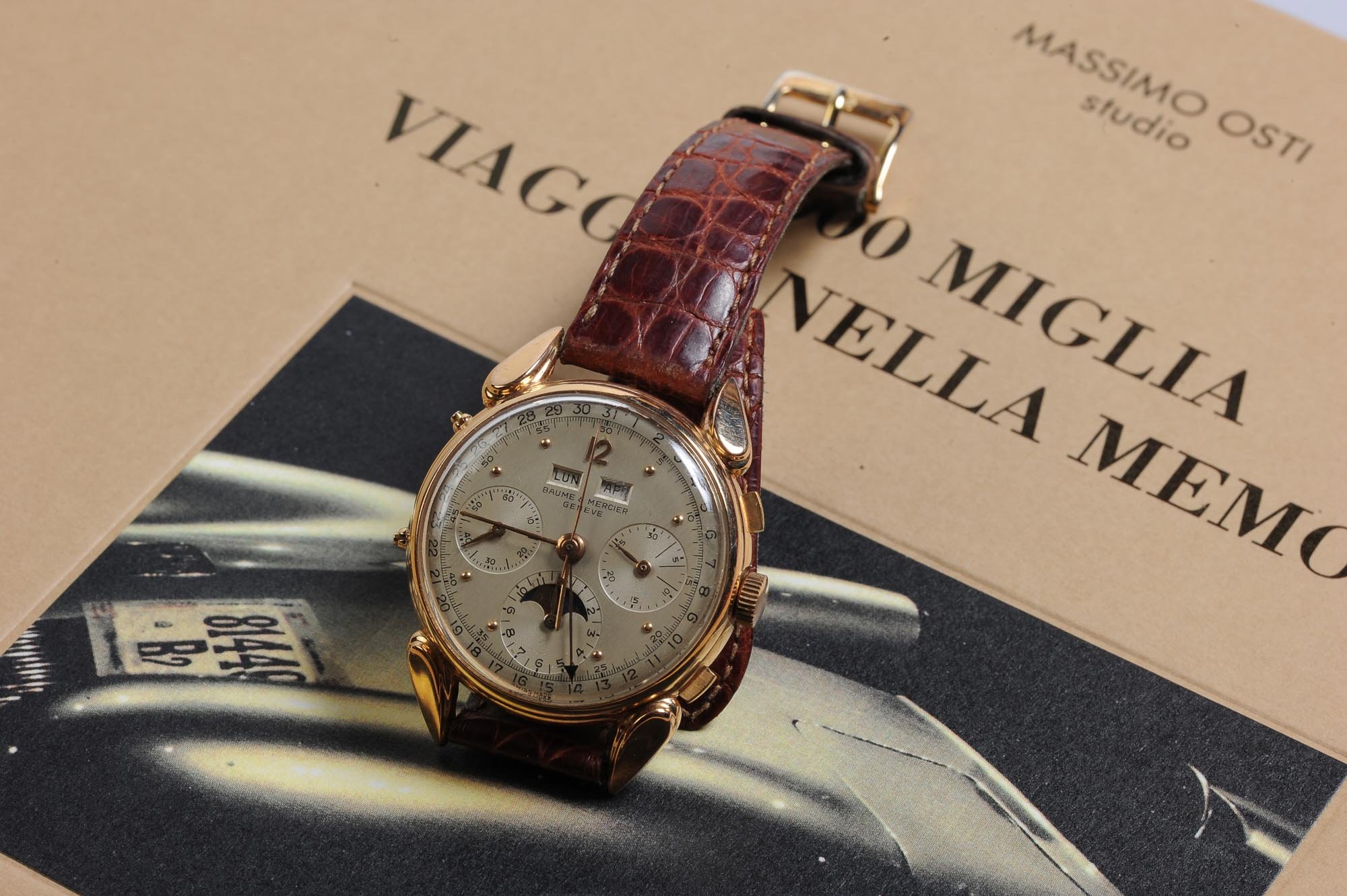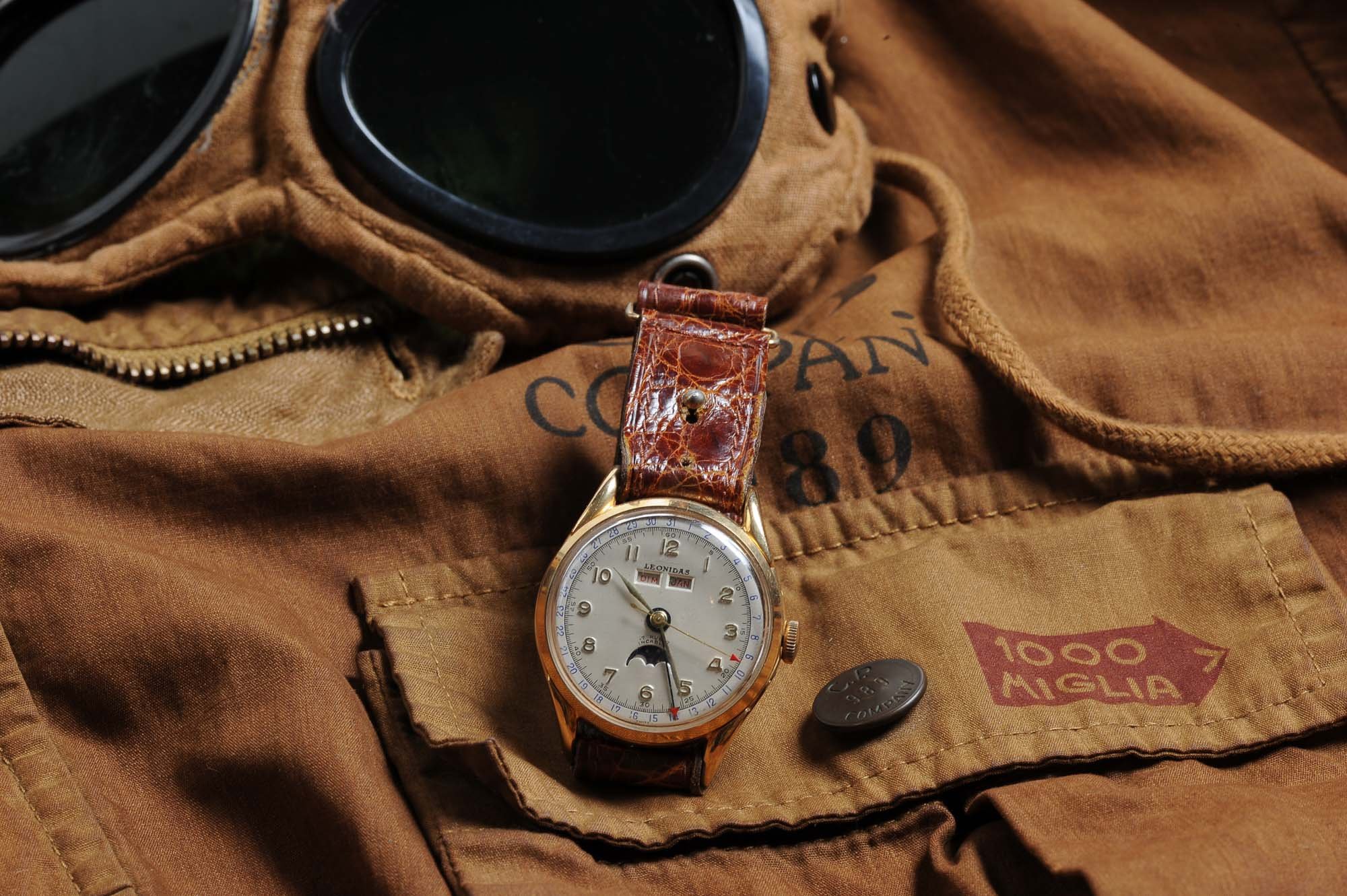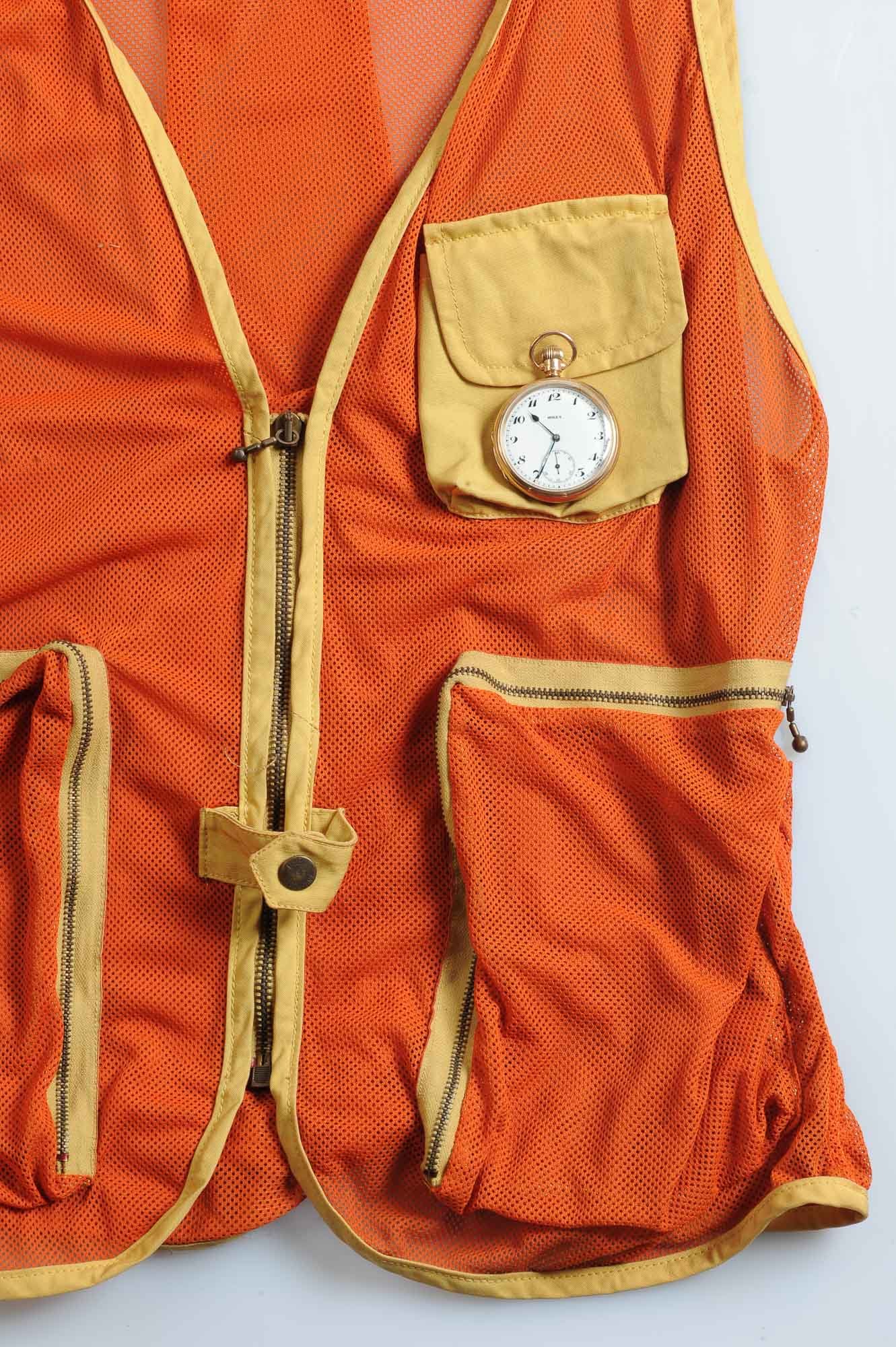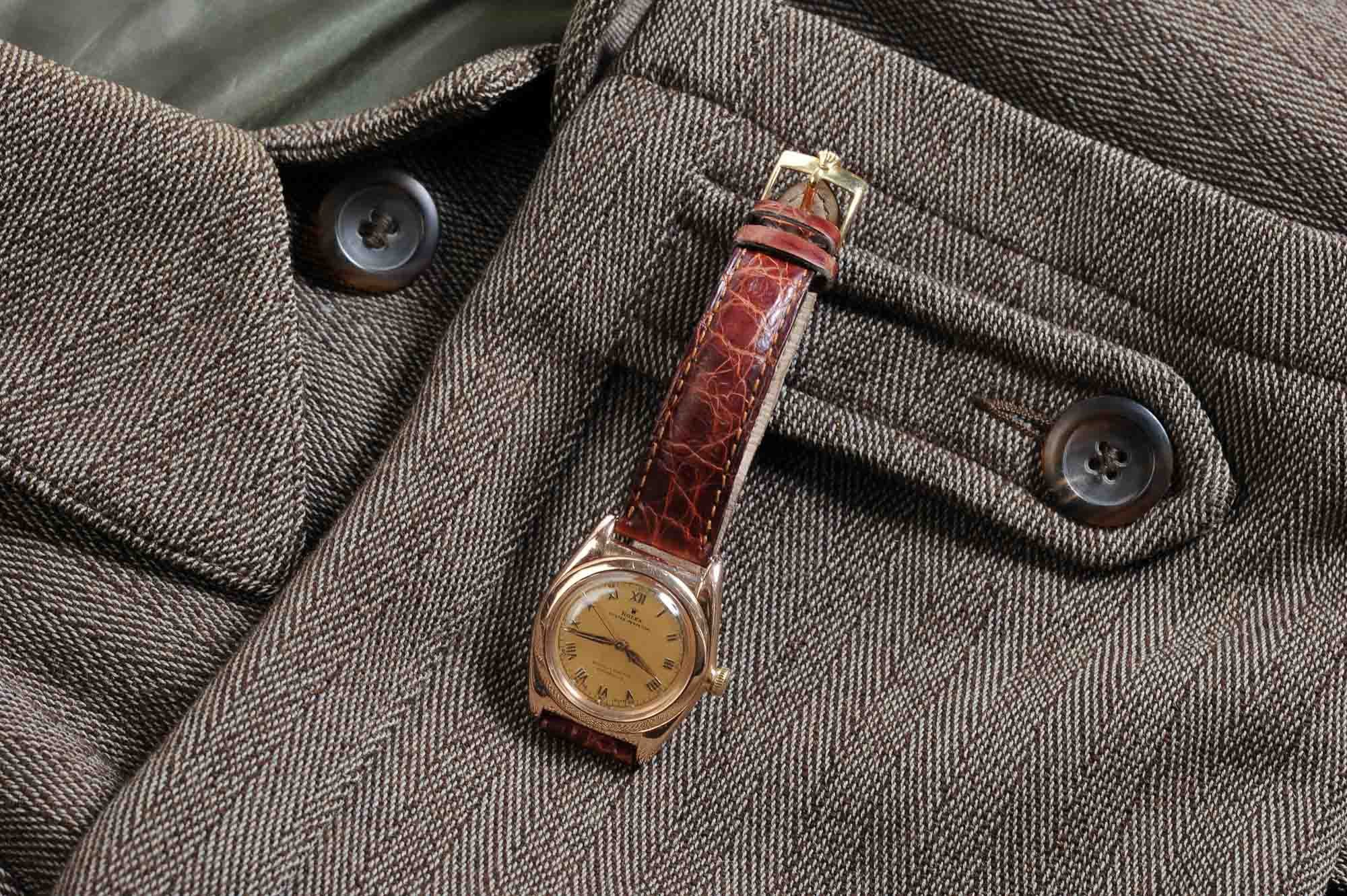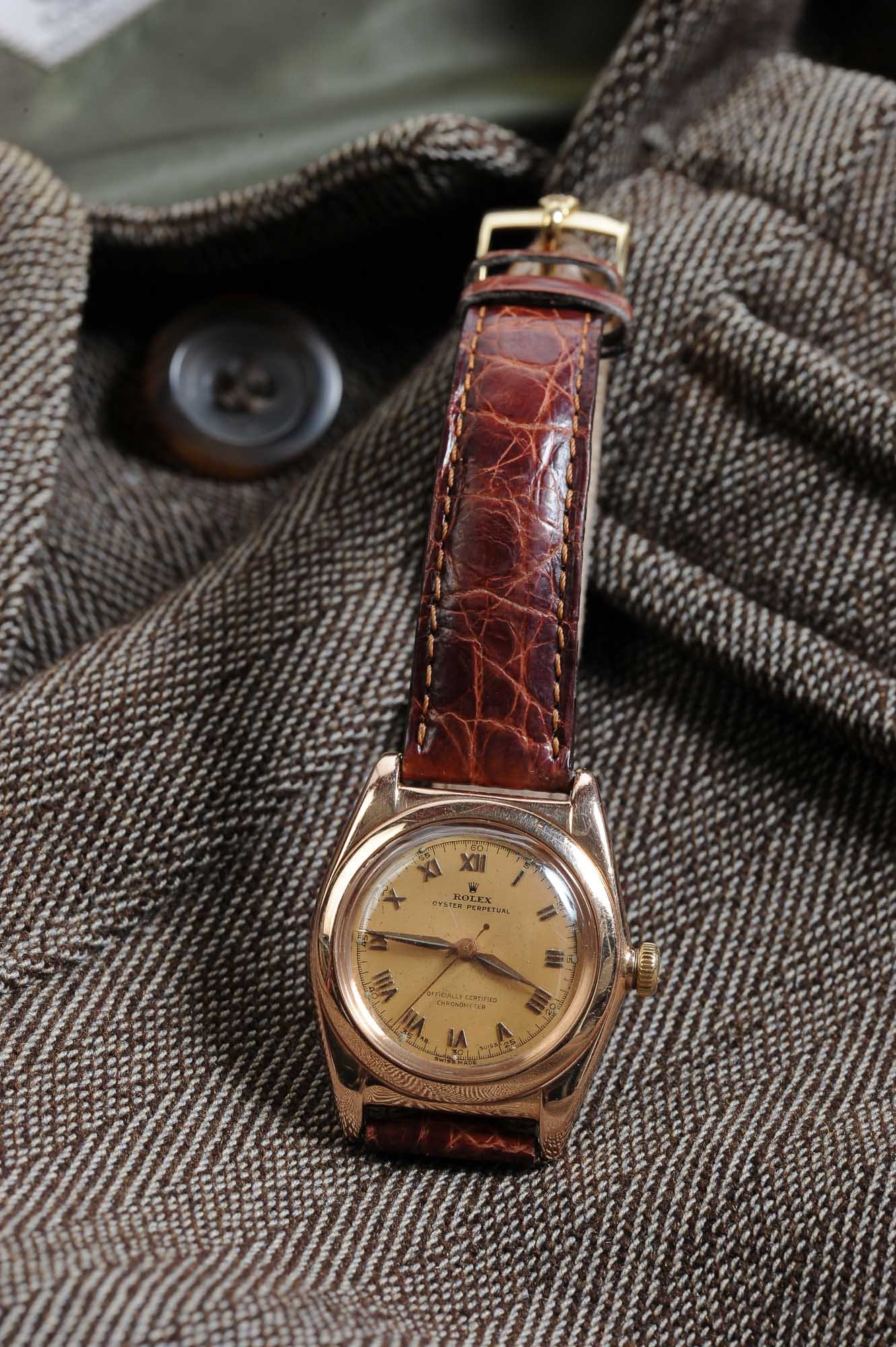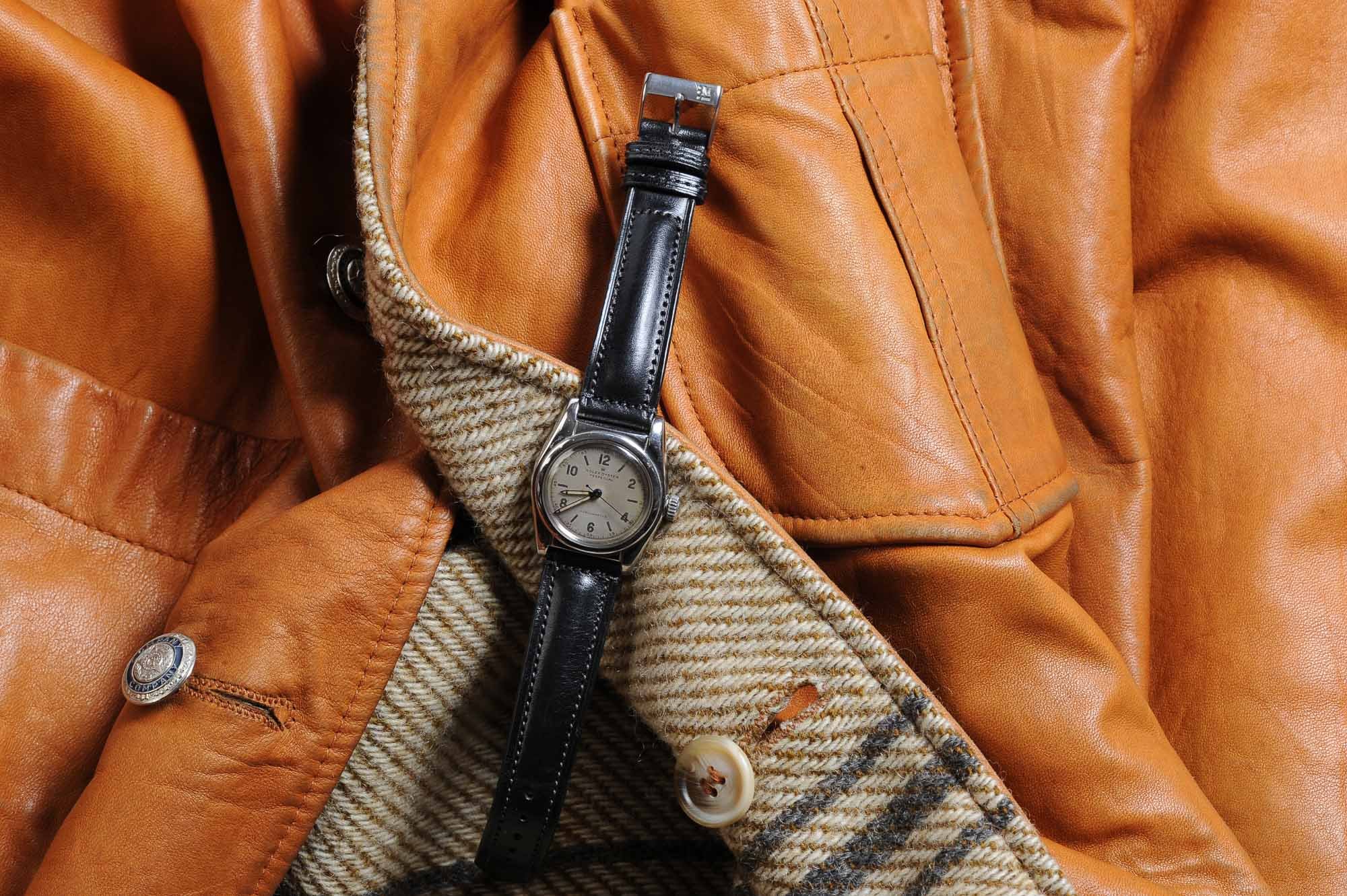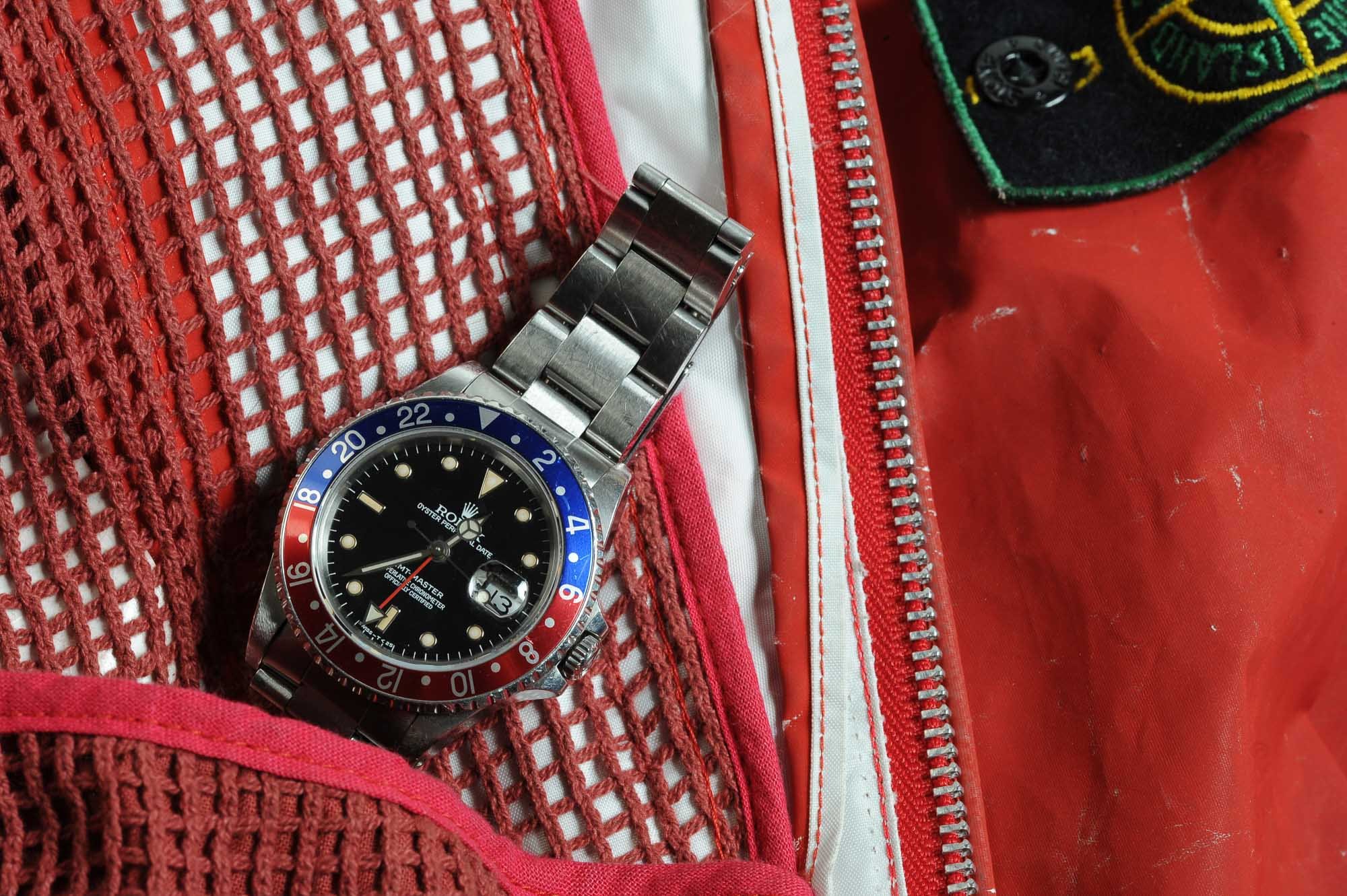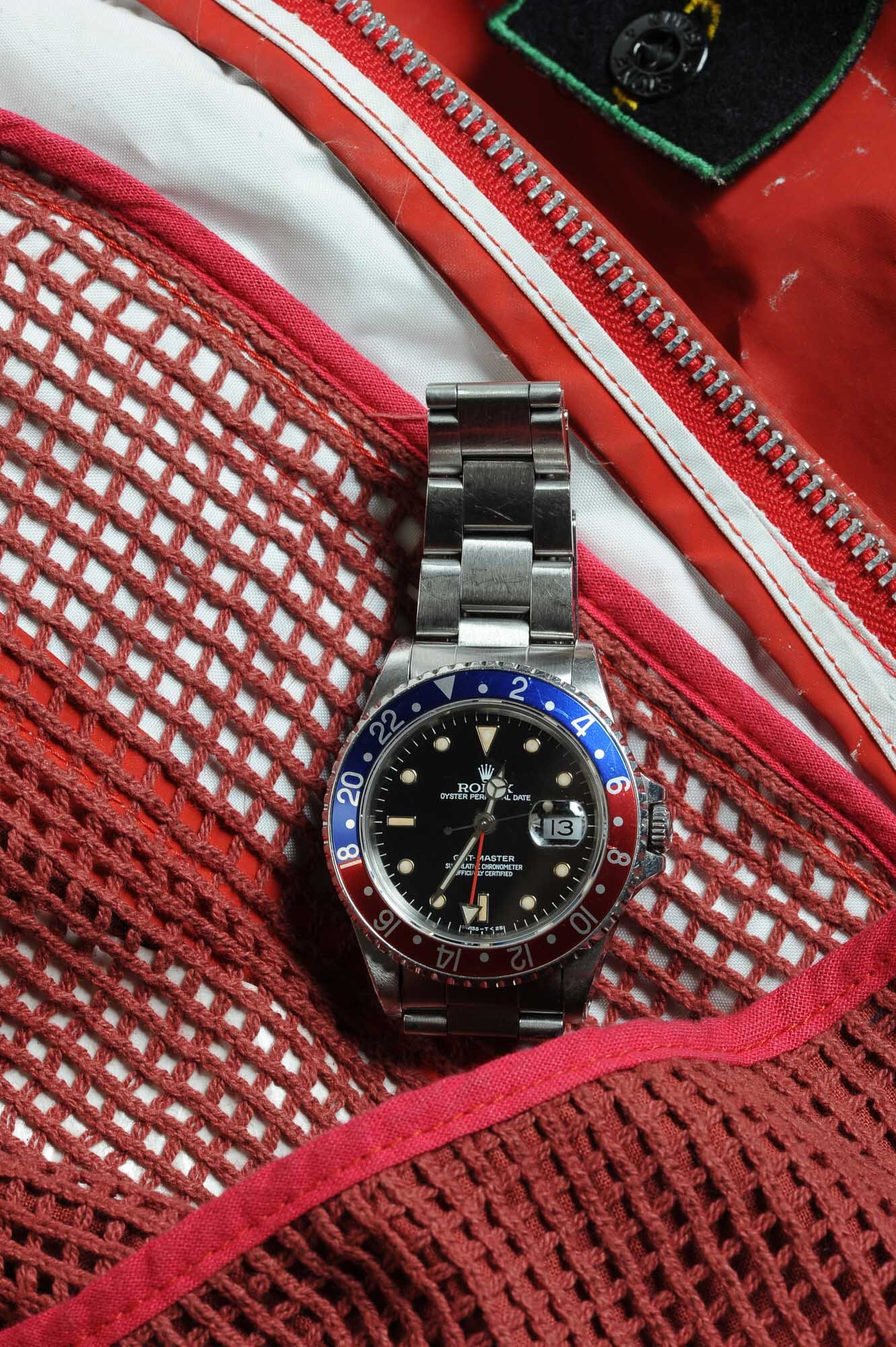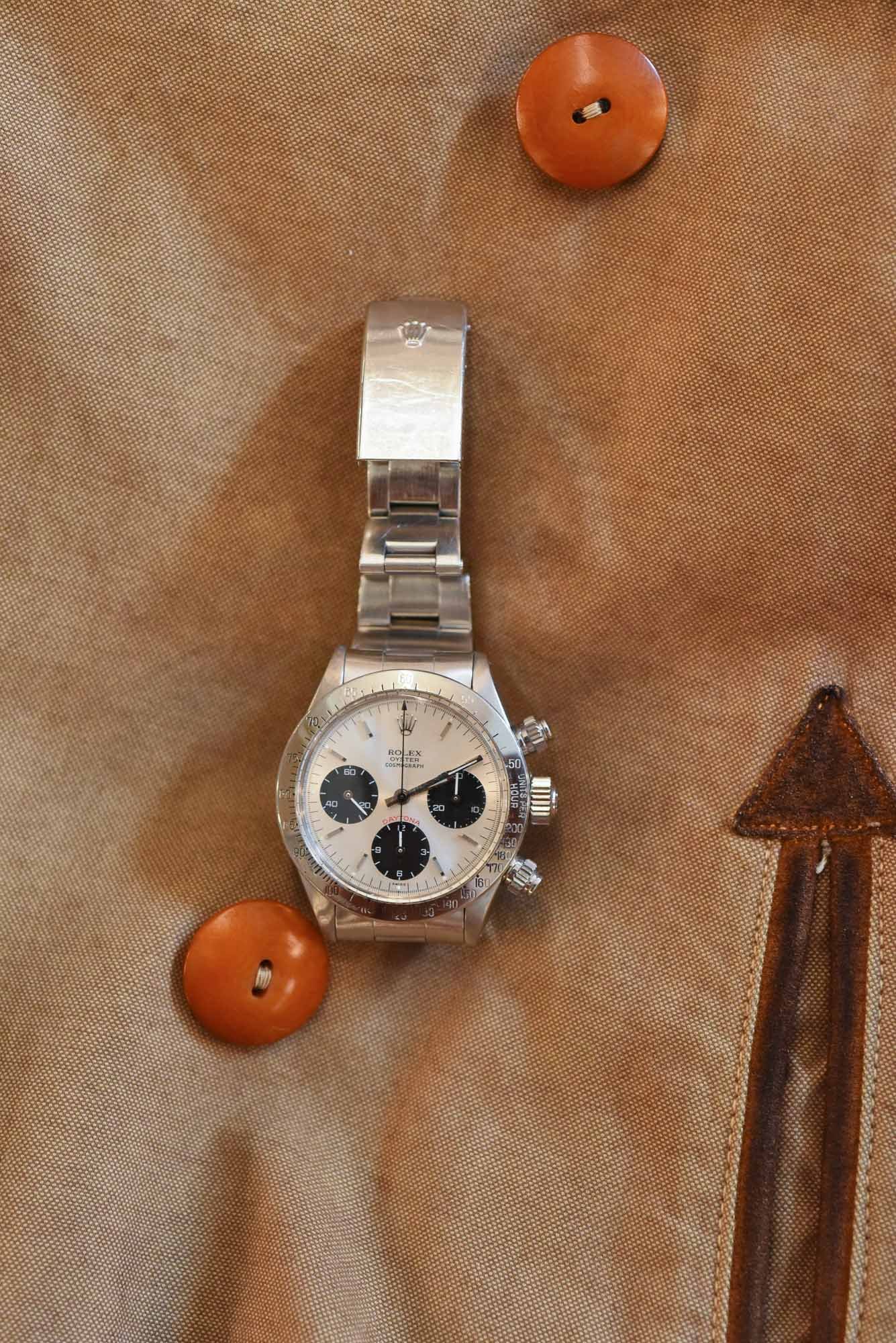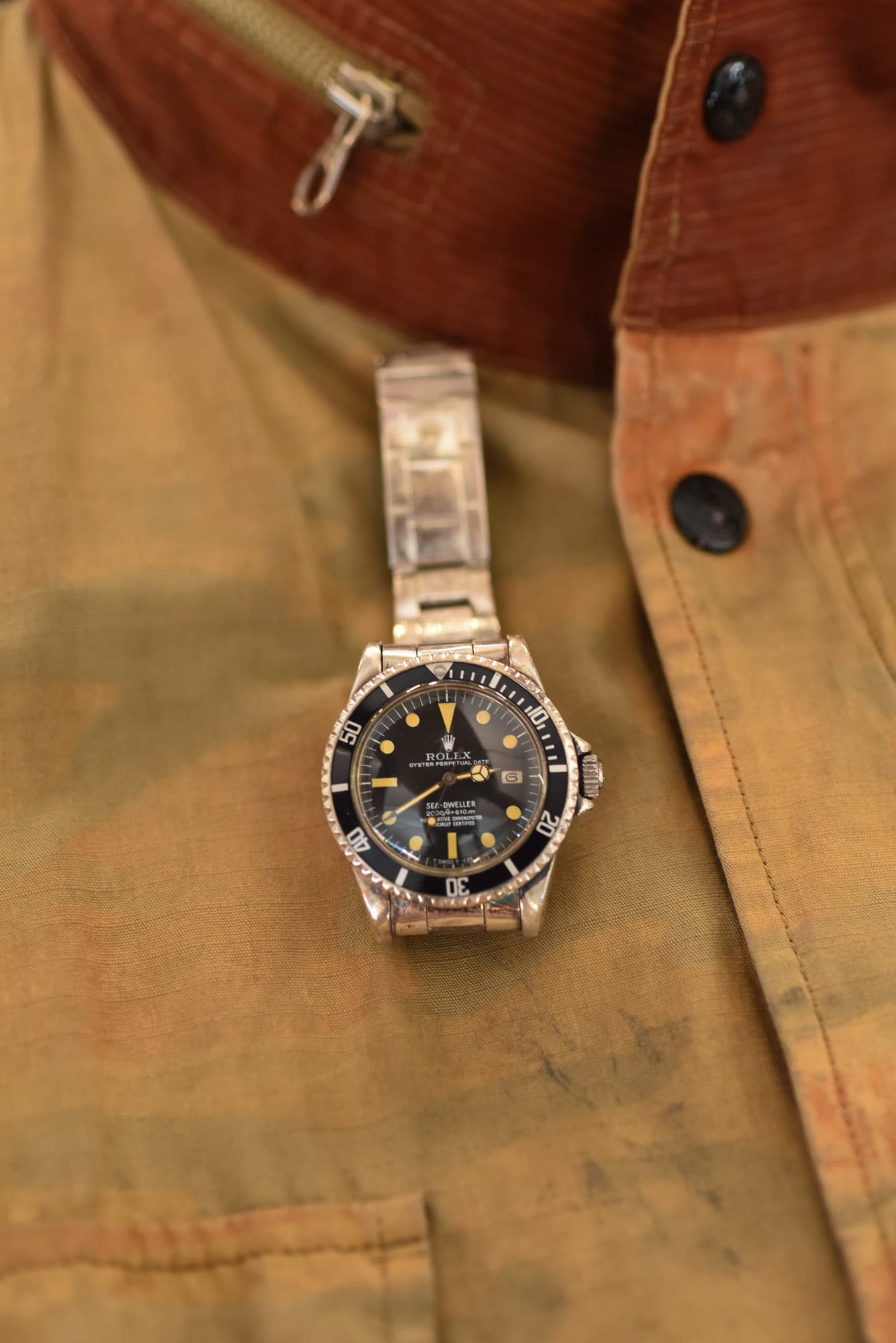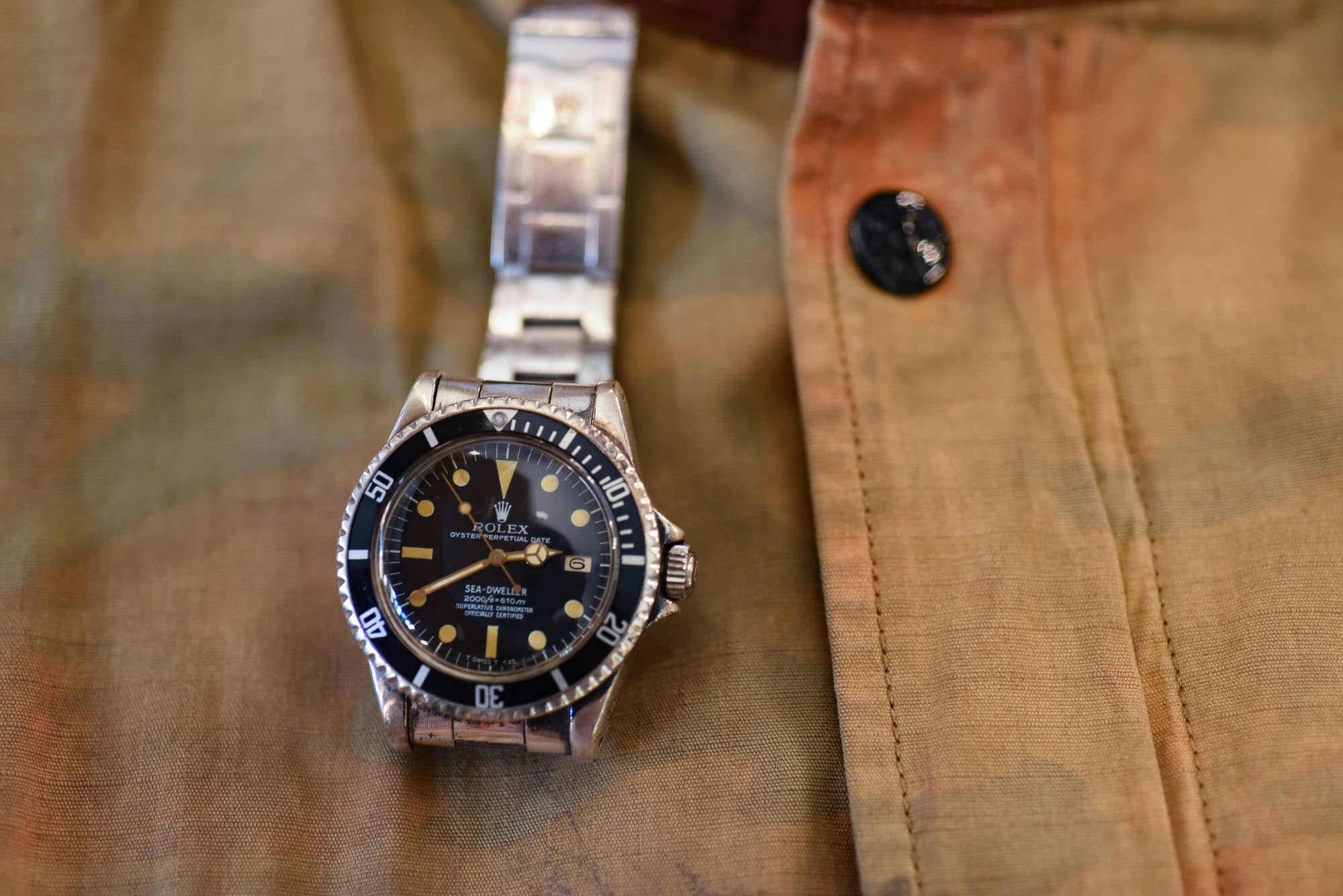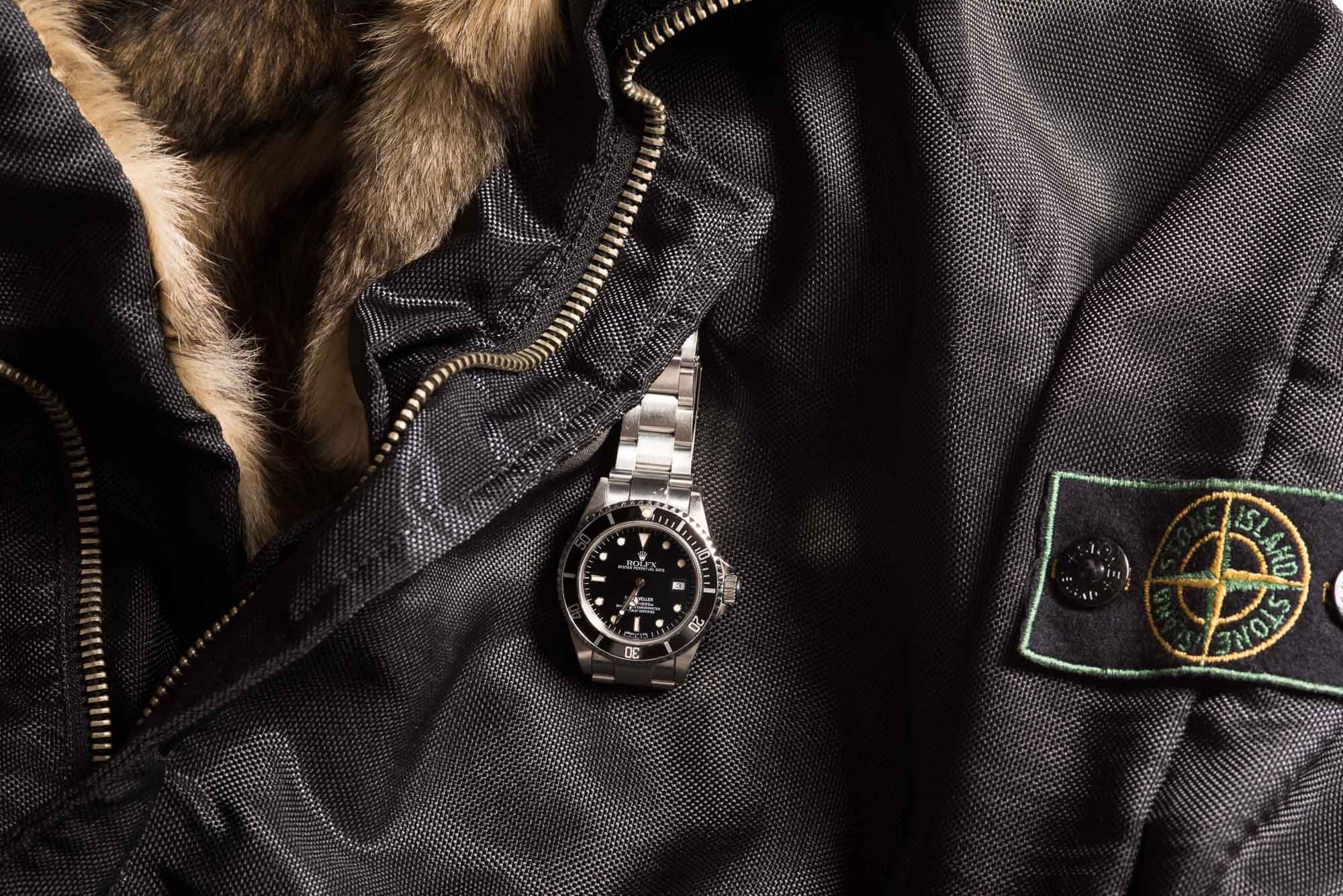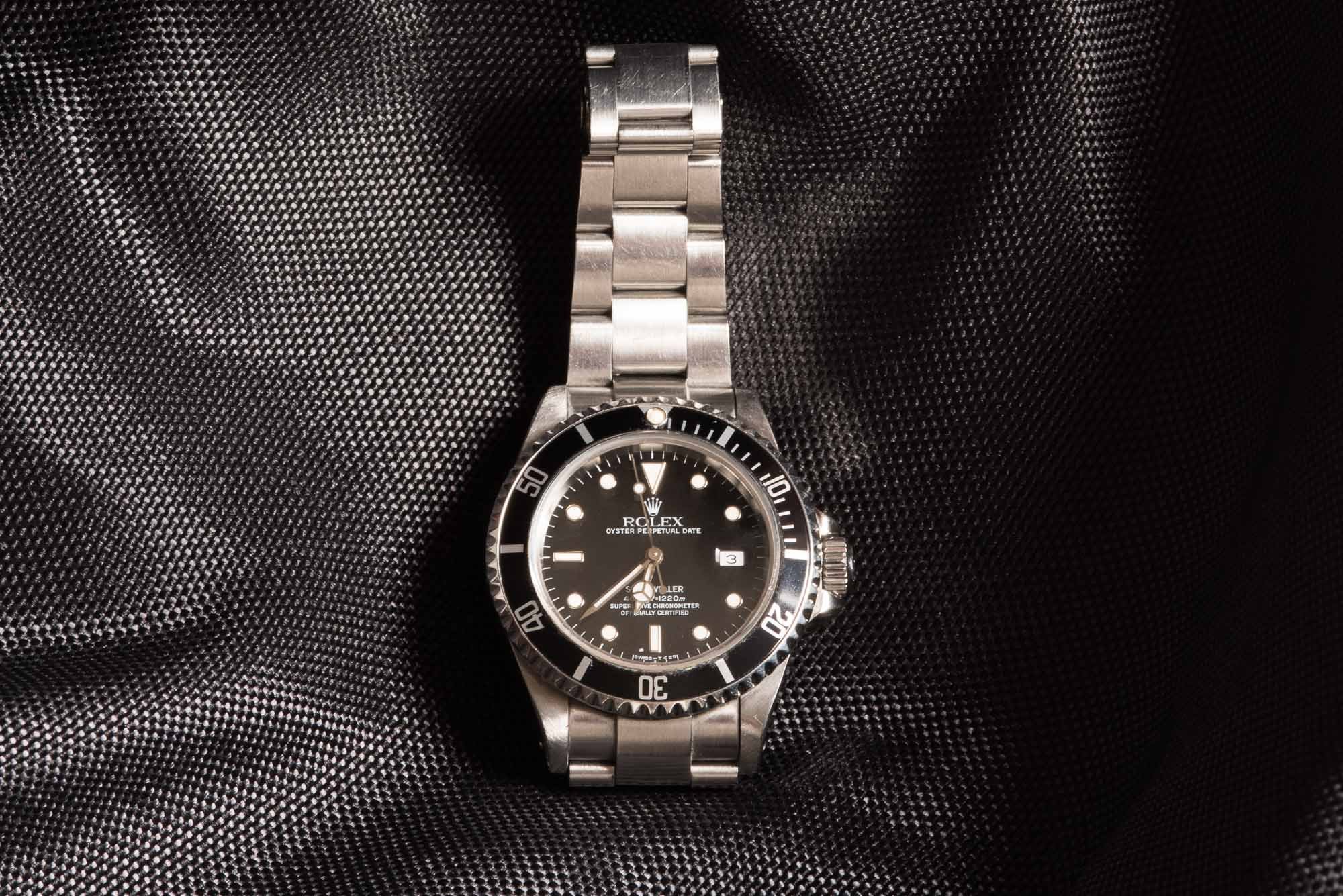Weekend Read: The Collection Of Stone Island Founder Massimo Osti — Rolex, Tissot, Leonidas, And More
The late Massimo Osti was the founder and designer of Stone Island, C.P. Company, and other brands. He was the inventor of garment dyeing and heat-reactive and reflective jackets. His work is kept and maintained by the Massimo Osti Archive. Together with them, we went through Osti’s watch collection and share his favorite watches with you.
Massimo Osti
Garment engineer Massimo Osti (1944 – 2005) created innovative and game-changing clothing brands such as C.P. Company, Stone Island, Boneville and later Massimo Osti Production and Left Hand. Osti was way ahead of his time with products such as a heat reactive jacket (1987) and a reflective jacket (1991). Today, his visionary method has become the standard for a complete industry. Brands like Stone Island and C.P. Company are more popular than they were ever before. Their output is still based upon Massimo Osti’s magical mix of key-elements: material innovation, extra-ordinary colour approach, military- and utility inspiration, extreme attention to detail, and state-of-the-art knits.
Massimo Osti was as a graphic designer who experimented with prints on clothes in the 1970s. When his try-outs became popular, he accidentally stumbled into designing clothes. Research and innovation were his main drives; he never called himself a fashion designer. In private, Osti also loved cars, sailing vessels and watches. He loved watches so much, that he even created a watch viewer in the sleeve of one his most iconic designs, the C.P. Company Mille Miglia ‘goggle’ jacket: a protective window on the left sleeve, located at the wrist, to allow brief glance at one’s wristwatch at any given moment. (Note that Osti was left-handed and wore his watch on his right wrist). A smaller version of this watch viewer has now become C.P. Company’s brand sign.

Our editor-in-chief RJ is a fan of Stone Island, as seen in the picture above. The patch on the sleeve is the unmistakable Stone Island signature.
Massimo Osti – The watch collector
In the book titled “Ideas From Massimo Osti”, written and compiled by Osti’s spouse Daniela Facchinato, Massimo is depicted with a steel Rolex, holding the original, green-edged Stone Island badge between his fingers. Osti owned a few Rolex watches, but he was a watch collector in the first place. Mrs Facchinato remembers Massimo’s love for watches very well. “Massimo wore a watch every day, he loved his watches. There was no plan behind collecting them, but he just bought the ones he liked and never let them go”. Fratello is proud to present and discuss Massimo Osti’s watch collection for the first time, pictured here with some masterpieces from the Massimo Osti Archive.
Watches from the Massimo Osti Archive
After his passing in 2005, Osti’s watches remained in the family. For this article, the family brought the watches to the Massimo Osti Archive, the physical portfolio of Massimo Osti’s work and the synthesis of his unique creative path. It hosts over 5.000 pieces, varying from Osti’s earliest prototypes to 60’s Russian spacesuits, and from garment-dyeing lab dips to exclusive print patterns. The extensive fabric and cultural library were collected over a period of 30 years of work, in collaboration with more than 360 fabric companies and laboratories. The archive is still operated by Mrs Facchinato and daughter Agata Osti and for this article, it was the photoshoot decorum. All watches were professionally photographed by Mrs Facchinato, who is a photographer by profession. She was responsible for most of the artwork for the marketing of Osti’s brands during the ’70s, ’80s and ’90s, some rare books for C.P. Company, plus the now also sought after C.P. Magazine.
“For the Fratello article, we conducted a shoot in which Massimo’s timepieces are combined with some pieces from his archive, which are in fact timepieces too”, Mrs Facchinato says.
Tissot Automatic Navigator (1950s)
Massimo Osti shirt (1999)
Tissot Navigator from the 1950s
One of Massimo’s watches is a Tissot Navigator. This watch was developed in the early 1950s, as ‘wristwatch for men with universal time’. Universal time watches were not made in series production at the time, and the available examples were always difficult to read. So, Tissot wanted to create the first mass-produced universal time watch, which had to have good legibility too. In order to achieve this, Tissot designed a watch with only one moving component to show universal time: a central rotating disc, showing the names of 24 world location (and thus 24 time-zones). A fixed 24-hours ring surrounded the rotating disc, completes the dial. The disc rotates fully in 24 hours, shifting the world locations (time-zones) by the numbers on the 24-hour ring. So, as time goes by, the location names pass the hours number on the 24-hour ring. At any given time, the time can be seen in every possible time zone. One should only know the capitols per time-zone. A separate system showed local time in hours, minutes and a sweeping hand. The pusher at 2 is used to change the local time. Case materials include 14-ct gold, gold-filled, matte stainless steel. It has an automatic bumper movement. A quartz version appeared in 1980. Massimo’s watch seems to miss the fixed outer bezel, with its 12-hour scale, divided into steps of two hours. The white is shirt is from the Massimo Osti project (1999), in which the customer creates his own version of the available designs with a computer terminal in the point of sale. So, no shops full of clothes in all sizes, but just a collection to fit and then adapt it individually, tailor made. Osti’s goal was to reduce the cost that comes with production and distribution, and thus reduce the price of the garments without effecting quality.
Le Salève chronograph (Blum & Ostersetzer)
Stone Island Ice jacket 2nd generation (1989)
Le Saleve Chronograph
The vintage Le Salève chronograph is a good looking, rare bird. There is not much to find about the brand and there is no similar watch to find online. It seems to be a product from Swiss, probably 1940s, but that is a guess. The dial on Massimo Osti’s example looks like porcelain, the case seems gold plated. These watches were not expensive and had basis movements, but they were rather large. The length of the hands suggests that these are not original, because they don’t reach to the minute track. The chronograph counted up to thirty minutes in the dial at 3, the dial at 9 is a continuous small seconds hand. The large, central chronograph hand, counts seconds but also rotates along a tachymeter scale.
According to the book Swiss Timepiece Makers 1775 – 1975 by Kathleen H. Pritchard, La Salève was one of the watch brands that came forth from Blum & Ostersetzer from Bienne, but (also) based in Geneva. The company exported watches to Italy and represented Longines for Switzerland and Italy (Milan). The company used various brand names, Alba Watch Co., Chronometro Polare, Ecco, L’Ora, Fidelitas, F.O.B.O., Le Chrysanthèm, and Le Salève.
- Image courtesy of Stone Island
- Image courtesy of Stone Island
Ice Jacket
The jacket in the background is a Stone Island Ice jacket from the second generation. The Ice jacket is one of Osti’s incredible innovations: the fabric is heat reactive and changes color due to temperature changes. This jacket is featured in the book Ideas From Massimo Osti, chapter Ice Jacket. It is a ski jacket that changes color from red to brown when the temperature drops. It has a down liner, detachable with a stunning rope system, and an integrated balaclava in the hood.
Baume et Mercier triple calendar moon phase chronograph (1950s)
Book ‘1000 Miglia, viaggio nella memoriabook’ (Daniela Facchinato, 1990)
Baume & Mercier Triple Calendar
This is a very nice and probably solid (red) gold Baume et Mercier triple calendar watch. It displays the day, date, and month. The large, central arrow-shaped hand points the date in the outer index of the dial. Month and day are displayed in the small rectangular windows. The watch also features chronograph functions (counting up to thirty minutes), a small seconds dial, and a wonderful moon phase. The Osti-family cannot tell more about this watch, but based on its looks, it must be from the 1950s. Some call it ‘the flat lug moon phase. Watches like this – 1930 to 1950’s chronographs in gold – were popular in the 1990s. The movement is unknown, but it could be Valjoux 730 movement. It is a pretty large watch for its time, around 36mm. Inside and out, this watch is a thing of beauty and quite rare too.
The watch is shot on the cover of the rare coffee table book 1000 Miglia, viaggio nella memoria, about the 1988 Mille Miglia edition, that was sponsored by C.P. Company. Massimo Osti wanted to create a visual journey, a memory in pictures, reflecting the remarkable atmosphere of this classic car race, photographed by his wife, Daniela Facchinato. Another watch of Massimo’s is pictured on an original C.P. Company Mille Miglia jacket, that was made for the participants of the 1988 Mille Miglia.
Leonidas Triple Calendar Moon Phase
Original C.P. Company Mille Miglia jacket (1988)
Leonidas Triple Calendar
This is an interesting watch from an interesting brand. The Leonidas triple calendar moon phase watch has an ETA 1100 movement. It has little corrector pushers on the side of the case, you can rapidly change the day of the week, the month, the date, or slowly rotate the moon phase disc. The triple calendar shows the month, day of the week, and date; the black-red arrow points at the date in the blue outer index. The triple calendar and moon phase complications are added as a module. It is possible that the second’s hand has been replaced. Originally, the date hand had to stand out at a glance. Therefore, those hands were a bit thicker or darker colored, with an arrow or crescent-shaped point.
On Massimo Osti’s watch, both date and sweep seconds hands have a red arrow, which is contrary to how it was intended from a functional perspective. Leonidas made more watches with a complication in the 1940s and 1950s, with steel and gold-plated cases varying in size. Osti’s watch has a diameter of about 35 mm, which was big at that time. These affordable vintage watches with some complications remain collectible. Leonidas was absorbed by Heuer in 1962. Here’s an article by my colleague Balasz Ferenczi about cool and affordable watches.
Rolex pocket watch
Unbranded gilet or multi-pocket vest from Massimo’s reference archive
Rolex Pocket Watch — Or is it?
This Rolex-branded pocket watch is a little bit of a mystery, as are most of them in general. There is not much information about them. The introvert brand itself has nothing to say about it and doesn’t even mention pocket watches in the brief historical overview on its website. It cannot be determined if this is a genuine Rolex, but the watch had a porcelain dial and looks pretty neat.
Rolex 6085 Oyster Perpetual ‘Bubbleback’ in pink gold (1940s)
Early C.P. Company overcoat in wool (1980s)
Rolex Bubbleback
This chronometer-certified Rolex Oyster Perpetual ‘Bubbleback’ represents an important step in Rolex history. The word perpetual refers to perpetual motion: a self-winding watch that never stops as long as you wear it. This was a huge step ahead in the world of watchmaking. The first Bubblebacks appeared in the early 1930s and were only produced for approximately twenty years. Most of the early Bubblebacks were ‘time only,’ but later models also featured date. The original had subsidiary seconds, but later models had a sweeping seconds hand.
After 1935, Rolex started producing the Bubbleback in more sizes; a lady’s model was introduced in 1941. The case (32-33 mm) was made of Steelium (stainless steel), Rolesor (half gold, half steel), and pink or yellow gold. Steelium and Rolesor are Rolex creations, patented in 1931 and 1933. There were a few case style variations and many different dial designs in black, pink, white, and two-tone, 24-hour military-style, and even a dial with mixed Roman & Arabic numerals.
These Bubblebacks used to be sought-after
Osti’s red gold Bubbleback features a champagne coloured dial with Roman numerals and a 60 seconds scale on the outer rim of the dial. In the 1980s and early-mid 1990s Bubblebacks were highly sought-after and collectible. Back then, Rolex Daytonas were not even a thing. In the past 20 to 30 years, other Rolex watches became more collectible, and the relatively smaller Bubbleback fell out of grace. In 2017, Rolex expert James Dowling wrote an article about the Bubbleback in The Telegraph, titled The legendary watch the world forgot. Massimo Osti’s watch is likely a reference 3131 from the mid-1940s but is hard to identify with only this picture. The ‘swiss made’ with also a ‘FAB SUISSE’ on the dial would generally indicate that it was delivered to the French market.
Rolex Oyster Perpetual ‘Bubbleback’ in steel (1940s)
C.P. Company leather overcoat with woolen blanket lining (1980s)
Rolex Bubbleback in steel
Massimo Osti must have liked the Rolex Bubbleback since he had two of them. As stated above, there has been a variety of dials during its production years. This Bubbleback has a steel case, a military-style dial with bold Arabic numerals on the even hours, and a dash every other hour. The watch features luminous markers and hands and a sweeping seconds hand. There’s also a 60 seconds index in the dial’s outer rim, divided into steps of 5. Bubblebacks are some of the earliest wristwatches available by Rolex, made around the 1930s.
The movements were developed by Aegler in collaboration with Rolex. And if you ever wondered why these watches were nicknamed Bubbleback: the back of the watch has a convex shape. Massimo’s steel is likely to be a reference 2940 in steel from the mid-1940s, and it has radium luminous hands and dial. The watch is pictured on a 1980s Massimo Osti masterpiece for C.P. Company, combining leather with a wool liner, which is, in fact, a blanket. If you spread the coat, the brand name is knitted in the blanket pattern.
Rolex GMT-Master 16700 (1989 – 2001)
Stone Island Reflective Jacket (1991)
Rolex GMT-Master
Robert-Jan compiled a historical timeline of the world’s most desired GMT watch here on Fratello: The Rolex GMT-Master and Master II. According to this timeline, the watch has finally stepped out of the shadow of its diving brother. In other words: the Rolex GMT-Master has also become a highly sought-after timepiece. Rolex developed the watch in the 1950s, in collaboration with Pan American Airlines, the world’s largest airline at the time. PanAm started flying intercontinental and, soon after, trans-Atlantic, from New York to London and Paris. Travelers loved the time savings but also suffered jet-lag for the first time, due to time zone differences.
PanAm was worried about the effects on their pilots and asked Rolex to develop a watch that could keep time in two time zones. Rolex took their Turn-o-Graph, upgraded the movement with an additional 24-hrs driving wheel, and added a 24-hr hand. This new travel watch had four hands (hours, minutes, seconds, and the 24-hrs hand) and a rotating bezel with a 24hrs scale. This setting enabled timekeeping in two time zones. The watch kept home time, while the manually set 24-hrs hand kept destination time. The name GMT-Master comes from Greenwich Mean Time.
Massimo Osti’s Rolex GMT-Master with sapphire crystal is a reference 16700. This watch was also called the Last Master as it was the last GMT Master. It was discontinued to keep the GMT-Master II in the Rolex collection. Also, it was the last tritium GMT-Master. Because of the colors of the bezel, this blue-red version is also referred to as ‘the Pepsi Rolex’ (there’s also a Coke version with a black-red bezel).
Marina Reflective Jacket
Osti’s GMT-Master is presented here with one of his own masterworks: the Stone Island Marina Reflective jacket from 1991. The material of this jacket contains small spheres of glass between its fibers. The material was already in use as reflective taping on uniforms of police, firemen, and nocturnal workers, but Massimo imagined a complete jacket in this material. The effect of this product was supernatural. It was magical and stunning in 1991 when this was presented. Also, the Reflective Jacket was extremely expensive and not affordable for everybody. But it was a life-safer, for instance, in night traffic on a bike or scooter or when thrown overboard into the darkness of the sea. The inside of the Reflective Jacket is made of webbed material, like a net.
Over the years, the Reflective jacket changed in shape, and Osti made winter versions with detachable goose-down liners and even reflective pants. The Reflective jacket became a Stone Island classic; the brand still produces reflective garments and even brought the reflective concept to other materials such as knits. The ones made by Osti have become holy grails, highly sought after by collectors, exactly like certain Rolex watches. But they have become extremely rare. The Massimo Osti Archive has less than five reflective jackets. Other brands came up with reflective jackets more than 25 years later.
Rolex Oyster Perpetual Cosmograph Daytona 6265 (1971 – 1988)
C.P. Company J.P Sartre coat (1990-91)
Rolex Daytona 6265
The Rolex Cosmograph Daytona has been connected to car racing since the very beginning. And even today, the watch is sold as ‘a watch born to race’ and ‘the ultimate tool watch for those with a passion for driving and speed’. The first Cosmograph Daytona (6263) was launched in 1963 and was produced until 1969. The Daytona changed from this version into the current chronograph, which is available in several variations. The name Daytona comes from the Daytona endurance race that has been held since 1966 at the Daytona International Speedway in Daytona Beach, Florida. Massimo’s Rolex Daytona is a 6265 manual wind caliber 727 (Valjoux). The word ‘swiss’ at six on Massimo’s dial indicates that it is a service dial. It was probably replaced in the late 1990s or early 2000s. From 1998, the (original) tritium dials of these watches were replaced by the luminova dial during a Rolex service. The 6265 came in many new types of dials. The Red Daytona, like Osti’s, was very popular. A few other dials were made only for a very short time, and these Daytona versions are among the rarest and most expensive on the market today.
The C.P. Company J.P. Sartre coat is an example of Osti’s broad interests and inspirations and how he Ostified his inspiration into, in fact, a new product by improving the original concept. Not only military uniforms or utility vests could inspire Massimo, but also clothes people wear daily. When he came across a picture of the French philosopher Jean-Paul Sartre, Massimo liked the ‘informal elegance’ of Sartre’s coat. He copied the basic characteristics and redesigned the coat into a 2.0 version, adding rubber coating, insulated padding, and emery brushing for the cotton and net lining. He adds function to the form and creates a completely new look with his innovative materials and combinations. The first versions were made from sheepskin with leather finishing or cotton with rubber wool finishing (rubber wool is an Osti-invented material). Other collections featured updated variations of the jacket.
Rolex SeaDweller 1665 MK2 Rail Dial (approx. 1979)
Stone Island Ice Jacket Camouflage (1990)
Rolex Sea-Dweller 1665
Rolex contributed extensively to the evolution of the waterproof watch and the development of the diving watch. Their smart strategy of buying patented ideas often gave them a head start. Add to this Rolex’s own innovative approach to watchmaking, and the outcome has to be an outstanding product. The first step was the Oyster case, but many other obstacles had to be overcome. From the crown to the back and the glass – it all had to be hermetically closed under increasing pressure. Rolex presented their Submariner in 1954 as “the diver’s friend”. According to James Dowling’s book, it was ‘a bizarre oversized watch with a hemisphere crystal’. The first Submariner (6204) was tested up to a depth of 10.335 feet (3.150 meters), attached to the outside of a diving vessel. An overview of the Rolex Submariner’s history can be found here.
During the 1950s, the Submariner stood at the basis of the creation of the Sea-Dweller. When better engines, cars, and interstate highways increased the fuel demand explosively, at least in the United States, domestic oilfields were no longer adequate. After having fueled WWII, these were seriously depleted, and oil companies started to look further and had to drill deeper – offshore! The new drilling depths came with several new challenges. The pressure at deeper depths was one of them. For divers in the first place, this problem was solved with underwater decompression tanks or diving bells, where gasses could be breathed out.
But watches like the Submariner could not release the gas that had sneaked in under the enormous pressure underwater. When pressure decreased, in a diving bell, for example, gasses inside the watch expanded but couldn’t get out because of the extremely strong construction of a Submariner. So, the gas left the watch through the weakest link: the glass. With an enormous bang and force, this popped off the watch under high pressure. A life-threatening situation in a decompression tank the size of a few mobile toilet units. The French diving company COMEX asked Rolex to collaborate on the solution to this problem. They made a Submariner with a one-way gas escape valve, and the problem was gone. In 1971, Rolex introduced the 1665 Sea-Dweller: A Submariner with a strengthened case and the world’s first helium valve.
There is an interesting story to tell about this watch. A friend and colleague once gave Massimo this steel Rolex for his birthday. After a while, Massimo looked at it and decided to silver-plate it.
Massimo loved the Sea-Dweller
Massimo Osti owned two Sea-Dwellers. The oldest Sea-Dweller (with a more yellowish patina on the dial) is a reference 1665 from approximately 1979. The configuration of Massimo’s watch appears to be a Mark II (collector’s jargon) with a so-called ‘Rail Dial’, where the chronometer text lines are aligned in the middle, and the space between the words is therefore continuous on the two bottom lines. Daniela Facchinato: “There is an interesting story to tell about this watch. A friend and colleague once gave Massimo this steel Rolex for his birthday. After a while, Massimo looked at it and decided to silver-plate it. He went to the Rolex-reseller, who was shocked. ‘Impossible,’ he said. But Massimo wanted to try it anyway and gave the watch to a friend artisan and asked him to silver plate it. The friend disassembled the watch and put it in a silver bath. The result was beautiful. The silver has a delicate shine; it changed and got a “used” look over time. Like denim or leather. So funny because this is exactly what he did with his products. He wanted them to have a used look, visible changes by using it”.
The jacket in this picture – Stone Island Ice Jacket Camouflage, a field jacket design from 1991 – is a highlight in Massimo’s career and actually links to the Rolex in the sense of the ability to change. The first ice jackets changed from one color into another color, monochrome. This jacket has a camouflage print: three or four colors that change into one with a temperature change. To achieve this, the design team remained at work for 15 days in a row. Garment dyeing – one of Osti’s game-changing inventions that gave each garment its own unique coloration — was applied to this complex jacket. First, each piece was printed with the camouflage pattern, then each jacket was garment-dyed. As a result, each garment had a unique hue that changed over time, while all jackets changed from multichromatic to monochromatic when the temperature changed.
Rolex Sea-Dweller 16600 tritium (1988 – 2008)
Stone Island jacket Formula Steel ‘Lupa’ (1994-1995)
Rolex Sea-Dweller 16600
Massimo’s other Sea-Dweller (also with tritium dial) has reference 16600 and was in production until 2008. Nobody knew whether it was discontinued for good or just on hold for whatever reason until it was reintroduced in 2014 as a 116600, with a ceramic bezel. The black jacket in which the Sea-Dweller rests is a rare one, discovered in the Massimo Osti Archive in 2010 by yours truly. Even though Osti had proven to be absolutely unpredictable – and therefore always surprising – this jacket stood out somehow. Possibly part of his last collection for Stone Island, this parka was made of Formula Steel, a lightweight high-tenacity colored nylon canvas and Stone Island regular during the 1990s.
The garment looks rather plain and simple at first sight like a less is more version of the good old N-3B, but then this brutal fur lining growls at you. Fur that turns out to be that of a wolf, and it is not only in the hood! The entire jacket is wolf fur-lined. Massimo made a reversible garment of it so that it could also be worn as a fur coat… Reversible jackets were one of Osti’s reoccurring concepts. “A reversible side can a material surprise or new function.” The origins of these double-face jackets can be traced back to, for instance, hunting clothing of the 1960s, with a camouflage side and a high visibility side. Osti used both functionally and esthetically, but always with a keen eye for the element of contrast. This black jacket is proof of that and, at the same time, a hardcore, super warm winter tool.
Thank you, Balazs Ferenczi and Sacha Davidoff, for helping me with the names and numbers. Also, a big thanks to Daniela Facchinato and Lorenzo Osti.
You can visit Stone Island here, CP Company here, and the Massimo Osti Archive here.

